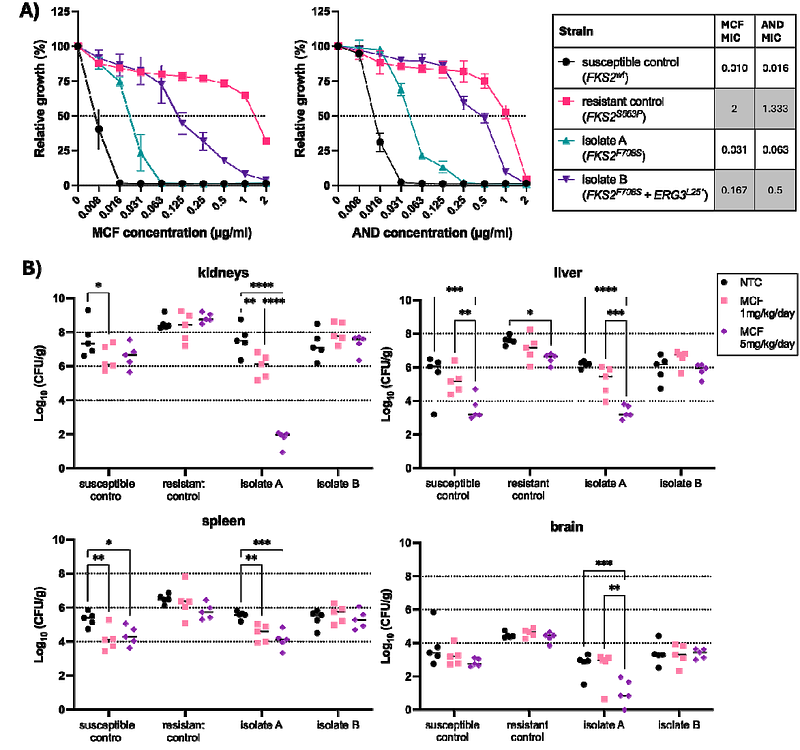Epistasis at the cell surface: what is the role of Erg3 loss-of-function in acquired echinocandin resistance?

Epistasis at the cell surface: what is the role of Erg3 loss-of-function in acquired echinocandin resistance?
Carolus, H.; Diaz, J.; Biriukov, V.; Jacobs, S.; Sofras, D.; Pageau, A.; Romero, C. L.; Vinken, L.; Escribano, P.; Guinea, J.; Lagrou, K.; Landry, C.; Gabaldon, T.; Van Dijck, P.
AbstractEchinocandins, which target the fungal {beta}-1,3-glucan synthase (Fks), are essential for treating invasive fungal infections, yet resistance is increasingly reported. While resistance typically arises through mutations in Fks hotspots, emerging evidence suggests a contributing role of changes in membrane sterol composition due to ERG3 mutations. Here, we present a clinical case of Nakaseomyces glabratus (Candida glabrata) in which combined mutations in ERG3 and FKS2, but not FKS2 alone, appear to confer echinocandin resistance. Integrated analyses reveal a recurrent association between Erg3 loss-of-function and echinocandin resistance mediated by Fks variation across Candida species, but exclude ERG3 loss-of-function as an independent resistance mechanism. Advances in Fks structural biology and insights into echinocandin-Fks interactions support a model of epistatic crosstalk between membrane sterols and Fks function. Understanding this interaction is crucial, as it may underlie not only acquired echinocandin resistance but also the broader development of multidrug resistance across major antifungal drug classes.